Description
Wong’s Essentials of Pediatric Nursing
Wong’s Essentials of Pediatric Nursing Hockenberry Wilson
Wong’s Essentials of Pediatric Nursing Hockenberry Wilson 9th
Wong’s Essentials of Pediatric Nursing Hockenberry Wilson 9th Test Bank
Wong’s Essentials of Pediatric Nursing Hockenberry 9th Edition Test Bank
***THIS IS NOT THE ACTUAL BOOK. YOU ARE BUYING the Test Bank in e-version of the following book***
Name: Wong’s Essentials of Pediatric Nursing
Author: Hockenberry Wilson
Edition: 9th
ISBN-10: 0323083439
ISBN-13: 978-0323083430
Type: Test Bank
– The test bank is what most professors use an a reference when making exams for their students, which means there’s a very high chance that you will see a very similar, if not exact the exact, question in the test!
– The file is either in pdf, doc, rtf or zipped in the package and can easily be read on PCs and Macs.
– Delivery is INSTANT. You can download the files IMMEDIATELY once payment is done.
If you have any questions, please feel free to contact us. Our response is the fastest. All questions will always be answered in 6 hours., most of the time within 30mins
We also faced similar difficulities when we were students, and we understand how you feel.
But now, with the Wong’s Essentials of Pediatric Nursing 9th Test Bank, you will be able to
* Anticipate the type of the questions that will appear in your exam.
* Reduces the hassle and stress of your student life.
* Improve your studying and also get a better grade!
* Get prepared for examination questions.
* Can save you time and help you understand the material.
This is the quality of service we are providing and we hope to be your helper.
Delivery is in the next moment. Test Bank is accurate.
Prepare to receive your Wong’s Essentials of Pediatric Nursing 9th Test Bank in the next moment.
ISBN-10: 0323083439
ISBN-13: 978-0323083430
If you have any questions, or would like a receive a sample chapter before your purchase, please contact us at inquiry@testbankcorp.com
Wong’s Essentials of Pediatric Nursing
Wong’s Essentials of Pediatric Nursing Hockenberry Wilson
Wong’s Essentials of Pediatric Nursing Hockenberry Wilson 9th
Wong’s Essentials of Pediatric Nursing Hockenberry Wilson 9th Test Bank
Wong’s Essentials of Pediatric Nursing Hockenberry 9th Edition Test Bank
Chapter 01: Perspectives of Pediatric Nursing
MULTIPLE CHOICE
1. A nurse is planning a teaching session for parents of preschool children. Which statement explains why the nurse should include information about morbidity and mortality?
a. Life-span statistics are included in the data.
b. It explains effectiveness of treatment.
c. Cost-effective treatment is detailed for the general population.
d. High-risk age groups for certain disorders or hazards are identified.
ANS: D
Analysis of morbidity and mortality data provides the parents with information about which groups of individuals are at risk for which health problems. Life-span statistics is a part of the mortality data. Treatment modalities and cost are not included in morbidity and mortality data.
PTS: 1 DIF: Cognitive Level: Apply REF: 6-8
TOP: Integrated Process: Nursing Process: Planning
MSC: Area of Client Needs: Health Promotion and Maintenance
2. A clinic nurse is planning a teaching session about childhood obesity prevention for parents of school-age children. The nurse should include which associated risk of obesity in the teaching plan?
a. Type I diabetes
b. Respiratory disease
c. Celiac disease
d. Type II diabetes
ANS: D
Childhood obesity has been associated with the rise of type II diabetes in children. Type I diabetes is not associated with obesity and has a genetic component. Respiratory disease is not associated with obesity, and celiac disease is the inability to metabolize gluten in foods and is not associated with obesity.
PTS: 1 DIF: Cognitive Level: Apply REF: 3
TOP: Integrated Process: Nursing Process: Planning
MSC: Area of Client Needs: Health Promotion and Maintenance
3. Which is the leading cause of death in infants younger than 1 year?
a. Congenital anomalies
b. Sudden infant death syndrome
c. Respiratory distress syndrome
d. Bacterial sepsis of the newborn
ANS: A
Congenital anomalies account for 20.1% of deaths in infants younger than 1 year. Sudden infant death syndrome accounts for 8.2% of deaths in this age group. Respiratory distress syndrome accounts for 3.4% of deaths in this age group. Infections specific to the perinatal period account for 2.7% of deaths in this age group.
PTS: 1 DIF: Cognitive Level: Remember REF: 7
TOP: Integrated Process: Nursing Process: Assessment
MSC: Area of Client Needs: Health Promotion and Maintenance
4. Which leading cause of death topic should the nurse emphasize to a group of African-American boys ranging in ages 15 to 19 years?
a. Suicide
b. Cancer
c. Firearm homicide
d. Occupational injuries
ANS: C
Firearm homicide is the second overall cause of death in this age group and the leading cause of death in African-American males. Suicide is the third-leading cause of death in this population. Cancer, although a major health problem, is the fourth-leading cause of death in this age group. Occupational injuries do not contribute to a significant death rate for this age group.
PTS: 1 DIF: Cognitive Level: Understand REF: 5 | 8
TOP: Integrated Process: Nursing Process: Planning
MSC: Area of Client Needs: Health Promotion and Maintenance
5. Which is the major cause of death for children older than 1 year?
a. Cancer
b. Heart disease
c. Unintentional injuries
d. Congenital anomalies
ANS: C
Unintentional injuries (accidents) are the leading cause of death after age 1 year through adolescence. Congenital anomalies are the leading cause of death in those younger than 1 year. Cancer ranks either second or fourth, depending on the age group, and heart disease ranks fifth in the majority of the age groups.
PTS: 1 DIF: Cognitive Level: Remember REF: 8
TOP: Integrated Process: Nursing Process: Planning
MSC: Area of Client Needs: Health Promotion and Maintenance
6. Which is the leading cause of death from unintentional injuries for females ranging in age from 1 to 14?
a. Mechanical suffocation
b. Drowning
c. Motor–vehicle-related fatalities
d. Fire- and burn-related fatalities
ANS: C
Motor–vehicle-related fatalities are the leading cause of death for females ranging in age from 1 to 14, either as passengers or as pedestrians. Mechanical suffocation is fourth or fifth, depending on the age. Drowning is the second- or third-leading cause of death, depending on the age. Fire- and burn-related fatalities are the second-leading cause of death.
PTS: 1 DIF: Cognitive Level: Remember REF: 4
TOP: Integrated Process: Nursing Process: Assessment
MSC: Area of Client Needs: Health Promotion and Maintenance
7. Which factor most impacts the type of injury a child is susceptible to, according to the child’s age?
a. Physical health of the child
b. Developmental level of the child
c. Educational level of the child
d. Number of responsible adults in the home
ANS: B
The child’s developmental stage determines the type of injury that is likely to occur. The child’s physical health may facilitate the child’s recovery from an injury but does not impact the type of injury. Educational level is related to developmental level, but it is not as important as the child’s developmental level in determining the type of injury. The number of responsible adults in the home may affect the number of unintentional injuries, but the type of injury is related to the child’s developmental stage.
PTS: 1 DIF: Cognitive Level: Understand REF: 3-4
TOP: Integrated Process: Nursing Process: Planning
MSC: Area of Client Needs: Health Promotion and Maintenance
8. Which is now referred to as the “new morbidity”?
a. Limitations in the major activities of daily living
b. Unintentional injuries that cause chronic health problems
c. Discoveries of new therapies to treat health problems
d. Behavioral, social, and educational problems that alter health
ANS: D
The new morbidity reflects the behavioral, social, and educational problems that interfere with the child’s social and academic development. It is currently estimated that the incidence of these issues is from 5% to 30%. Limitations in major activities of daily living and unintentional injuries that result in chronic health problems are included in morbidity data. Discovery of new therapies would be reflected in changes in morbidity data over time.
PTS: 1 DIF: Cognitive Level: Remember REF: 3
TOP: Integrated Process: Nursing Process: Assessment
MSC: Area of Client Needs: Health Promotion and Maintenance
9. A nurse on a pediatric unit is practicing family-centered care. Which is most descriptive of the care the nurse is delivering?
a. Taking over total care of the child to reduce stress on the family
b. Encouraging family dependence on health care systems
c. Recognizing that the family is the constant in a child’s life
d. Excluding families from the decision-making process
ANS: C
The three key components of family-centered care are respect, collaboration, and support. Family-centered care recognizes the family as the constant in the child’s life. Taking over total care does not include the family in the process and may increase stress instead of reducing stress. The family should be enabled and empowered to work with the health care system. The family is expected to be part of the decision-making process.
PTS: 1 DIF: Cognitive Level: Remember REF: 8
TOP: Integrated Process: Nursing Process: Implementation
MSC: Area of Client Needs: Health Promotion and Maintenance
10. The nurse is preparing an in-service education to staff about atraumatic care for pediatric patients. Which intervention should the nurse include?
a. Prepare the child for separation from parents during hospitalization by reviewing a video.
b. Prepare the child before any unfamiliar treatment or procedure by demonstrating on a stuffed animal.
c. Help the child accept the loss of control associated with hospitalization.
d. Help the child accept pain that is connected with a treatment or procedure.
ANS: B
Preparing the child for any unfamiliar treatments, controlling pain, allowing privacy, providing play activities for expression of fear and aggression, providing choices, and respecting cultural differences are components of atraumatic care. In the provision of atraumatic care, the separation of child from parents during hospitalization is minimized. The nurse should promote a sense of control for the child. Preventing and minimizing bodily injury and pain are major components of atraumatic care.
PTS: 1 DIF: Cognitive Level: Understand REF: 9
TOP: Integrated Process: Nursing Process: Implementation
MSC: Area of Client Needs: Psychosocial Integrity
11. Which is most suggestive that a nurse has a nontherapeutic relationship with a patient and family?
a. Staff is concerned about the nurse’s actions with the patient and family.
b. Staff assignments allow the nurse to care for same patient and family over an extended time.
c. Nurse is able to withdraw emotionally when emotional overload occurs but still remains committed.
d. Nurse uses teaching skills to instruct patient and family rather than doing everything for them.
ANS: A
An important clue to a nontherapeutic staff-patient relationship is concern of other staff members. Allowing the nurse to care for the same patient over time would be therapeutic for the patient and family. Nurses who are able to somewhat withdraw emotionally can protect themselves while providing therapeutic care. Nurses using teaching skills to instruct patient and family will assist in transitioning the child and family to self-care.
PTS: 1 DIF: Cognitive Level: Analyze REF: 9
TOP: Integrated Process: Nursing Process: Assessment
MSC: Area of Client Needs: Psychosocial Integrity
12. Which is most descriptive of clinical reasoning?
a. A simple developmental process
b. Purposeful and goal-directed
c. Based on deliberate and irrational thought
d. Assists individuals in guessing what is most appropriate
ANS: B
Clinical reasoning is a complex, developmental process based on rational and deliberate thought. Clinical reasoning is not a developmental process. Clinical reasoning is based on rational and deliberate thought. Clinical reasoning is not a guessing process.
PTS: 1 DIF: Cognitive Level: Understand REF: 12
TOP: Integrated Process: Nursing Process: Planning
MSC: Area of Client Needs: Safe and Effective Care Environment: Management of Care
13. A nurse makes the decision to apply a topical anesthetic to a child’s skin before drawing blood. Which ethical principle is the nurse demonstrating?
a. Autonomy
b. Beneficence
c. Justice
d. Truthfulness
ANS: B
Beneficence is the obligation to promote the patient’s well-being. Applying a topical anesthetic before drawing blood promotes reducing the discomfort of the venipuncture. Autonomy is the patient’s right to be self-governing. Justice is the concept of fairness. Truthfulness is the concept of honesty.
PTS: 1 DIF: Cognitive Level: Understand REF: 11
TOP: Integrated Process: Nursing Process: Implementation
MSC: Area of Client Needs: Physiological Integrity
14. Which action by the nurse demonstrates use of evidence-based practice (EBP)?
a. Gathering equipment for a procedure
b. Documenting changes in a patient’s status
c. Questioning the use of daily central line dressing changes
d. Clarifying a physician’s prescription for morphine
ANS: C
The nurse who questions the daily central line dressing change is ascertaining whether clinical interventions result in positive outcomes for patients. This demonstrates evidence-based practice (EBP), which implies questioning why something is effective and whether a better approach exists. Gathering equipment for a procedure and documenting changes in a patient’s status are practices that follow established guidelines. Clarifying a physician’s prescription for morphine constitutes safe nursing care.
PTS: 1 DIF: Cognitive Level: Apply REF: 11
TOP: Integrated Process: Nursing Process: Evaluation
MSC: Area of Client Needs: Safe and Effective Care Environment: Management of Care
15. A nurse is admitting a toddler to the hospital. The toddler is with both parents and is currently sitting comfortably on a parent’s lap. The parents state they will need to leave for a brief period. Which type of nursing diagnosis should the nurse formulate for this child?
a. Risk for anxiety
b. Anxiety
c. Readiness for enhanced coping
d. Ineffective coping
ANS: A
A potential problem is categorized as a risk. The toddler has a risk to become anxious when the parents leave. Nursing interventions will be geared toward reducing the risk. The child is not showing current anxiety or ineffective coping. The child is not at a point for readiness for enhanced coping, especially because the parents will be leaving.
PTS: 1 DIF: Cognitive Level: Remember REF: 12
TOP: Integrated Process: Nursing Process: Diagnosis
MSC: Area of Client Needs: Health Promotion and Maintenance
16. A child has a postoperative appendectomy incision covered by a dressing. The nurse has just completed a prescribed dressing change for this child. Which description is an accurate documentation of this procedure?
a. Dressing change to appendectomy incision completed, child tolerated procedure well, parent present
b. No complications noted during dressing change to appendectomy incision
c. Appendectomy incision non-reddened, sutures intact, no drainage noted on old dressing, new dressing applied, procedure tolerated well by child
d. No changes to appendectomy incisional area, dressing changed, child complained of pain during procedure, new dressing clean, dry and intact
ANS: C
The nurse should document assessments and reassessments. Appearance of the incision described in objective terms should be included during a dressing change. The nurse should document patient’s response and the outcomes of the care provided. In this example, these include drainage on the old dressing, the application of the new dressing, and the child’s response. The other statements partially fulfill the requirements of documenting assessments and reassessments, patient’s response, and outcome, but do not include all three.
PTS: 1 DIF: Cognitive Level: Analyze REF: 14
TOP: Integrated Process: Nursing Process: Implementation
MSC: Area of Client Needs: Safe and Effective Care Environment: Management of Care
17. A nurse is planning a class on accident prevention for parents of toddlers. Which safety topic is the priority for this class?
a. Appropriate use of car seat restraints
b. Safety crossing the street
c. Helmet use when riding a bicycle
d. Poison control numbers
ANS: A
Motor vehicle accidents (MVAs) continue to be the most common cause of death in children older than 1 year, therefore the priority topic is appropriate use of car seat restraints. Safety crossing the street and bicycle helmet use are topics that should be included for preschool parents but are not priorities for parents of toddlers. Information about poison control is important for parents of toddlers and would be a safety topic to include but is not the priority over appropriate use of car seat restraints.
PTS: 1 DIF: Cognitive Level: Apply REF: 3-4
TOP: Integrated Process: Nursing Process: Planning
MSC: Area of Client Needs: Health Promotion and Maintenance
MULTIPLE RESPONSE
1. Which behaviors by the nurse indicate a therapeutic relationship with children and families? (Select all that apply.)
a. Spending off-duty time with children and families
b. Asking questions if families are not participating in the care
c. Clarifying information for families
d. Buying toys for a hospitalized child
e. Learning about the family’s religious preferences
ANS: B, C, E
Asking questions if families are not participating in the care, clarifying information for families, and learning about the family’s religious preferences are positive actions and foster therapeutic relationships with children and families. Spending off-duty time with children and families and buying toys for a hospitalized child are negative actions and indicate overinvolvement with children and families, which is nontherapeutic.
PTS: 1 DIF: Cognitive Level: Understand REF: 9-10
TOP: Integrated Process: Nursing Process: Evaluation
MSC: Area of Client Needs: Psychosocial Integrity
ESSAY
1. A nurse is formulating a clinical question for evidence-based practice. Place in order
the steps the nurse should use to clarify the scope of the problem and clinical topic of interest. Begin with the first step of the process and proceed ordering the steps ending with the final step of the process. Provide answer as lowercase letters separated by commas (e.g., a, b, c, d, e).
a. Intervention
b. Outcome
c. Population
d. Time
e. Control
ANS:
c, a, e, b, d
When formulating a clinical question for evidence-based practice, the nurse should follow a concise, organized way that allows for clear answers. Good clinical questions should be asked in the PICOT (population, intervention, control, outcome, time) format to assist with clarity and literature searching. PICOT questions assist with clarifying the scope of the problem and clinical topic of interest.
PTS: 1 DIF: Cognitive Level: Understand REF: 11
TOP: Integrated Process: Nursing Process: Assessment
MSC: Area of Client Needs: Health Promotion and Maintenance

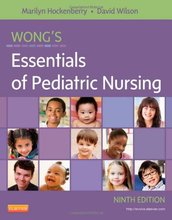
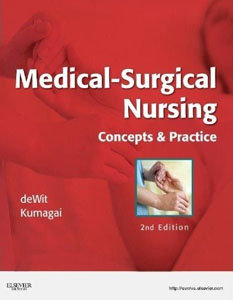
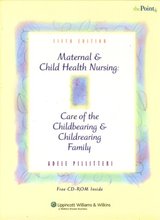
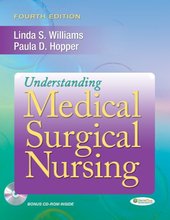
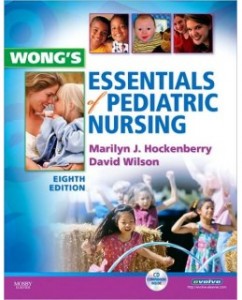

Reviews
There are no reviews yet.